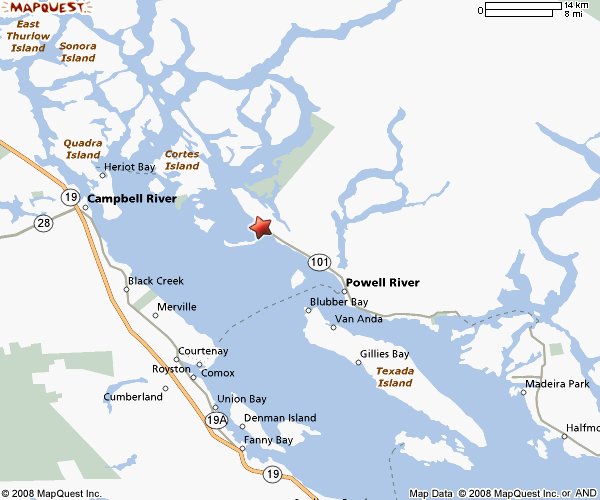
After 10 years of working toward a core corridor for alternative transportation and recreation: walking, cycling, and wheeling: from Lund to Saltery Bay, directors of the Powell River Greenways Society have dissolved the organization.
"We're just wasting our time," says Lyn Jacob, a founding director. "What they're doing is taking our concept of a Willingdon Beach-type trail all the way to Lund and turning it into a Duck Lake logging road." The society was established in 1992 after founding members had begun work building trails in 1990. Greenways is responsible for the Wildwood Hill switchback and the Dinner Rock-Browne Creek trail, both of which are used as demonstration sections of the corridor.
The society was committed to "whole access" principles which ensured its paths would be wheelchair-accessible. The grade was no greater than seven per cent and appropriate toppings were part of the plans. A number of factors precipitated the decision to disband, not the least of which is the current logging that is taking place on the Browne Creek trail north of Powell River.The trail has been closed due to logging. Area residents have also contacted the ministry of forests expressing their concerns about the logging. Syd Riley, who has volunteered his time and effort maintaining many trails north of Powell River, is one of them.
"Even talking to the experienced loggers doing the work in this area, they stated that it could have been logged properly and the trail left intact," he wrote in part. "It seems to me this is but another example of [the] complete disregard for the health and welfare of the many people that use these trails for our well-being."
The way the ministry deals with conflicting uses, specifically recreational ones involving trails, is to re-establish the trail after logging. But logging roads do not trails make, say trail proponents. "Part of our whole maintenance program is shade and overhead cover," says Jacob. "They made us get commitments from the community to maintain the trails before they gave us the grants. Once they turn them into a logging road with ATVs [all terrain vehicles] and four-by-fours and salmonberries, there's no trail left."
On the other hand, one of the reasons roads are constructed on trails is because the trails are built on old logging roads, says Ferd Hamre, MOF operations manager responsible for recreation in the Sunshine Coast forest district. "In a lot of cases, it makes sense to use the existing road," he explains. "There's solid engineering reasons why that road was there in the first place."
But when each licence holder is required to put back the trail, there is no continuity in the corridor concept. "The very concept we were working for was a community greenways corridor," says another Greenways founding director Patricia Keays. "They have been unable to understand or take up that concept."
Even though Greenways had forestry support dating back to 1992 for the corridor concept, and have participated in numerous public-consultations processes, its plans for trails don't appear on forest-development plan maps. The problem, according to Keays, is a lack of accountability after agencies consult with the public, coupled with a lack of continuity in the ministry and a lack of institutional memory. "It's not that we haven't been consulted," she says. "It's that, after having been consulted, the input that people from the community level provided was not incorporated into the logging maps. That's the problem."
Hamre points out that the ministry has never committed to maintain a no-harvest zone for the length of the corridor. "When we give approvals for these areas, we also acknowledge that it won't preclude harvesting," he says. "When harvesting does take place, we take a good look at it and see how we can accommodate the trail. It may be required to be moved in the short term. If it's in a riparian zone or a no-harvest zone, we may be able to accommodate it. We may have to feather along the edges of it or we may have to re-establish it after logging if that is the only option we can look at." Hamre says the ministry acknowledges the work volunteer groups have done. "We continue to work with groups like Greenways and other groups throughout this district. I could stack up a pile of letters that suggest a lot of groups out there like the things we're doing."
But for Jacob and Keays, the answer will be found in a restructuring of how decisions are made. Keays is working on a pilot project for a regional strategy with the goal of reconciling competing policies as well coordinating and harmonizing policy implementation for the long-term community and regional interests. It's a project she hopes will find support in the wider community.
By Laura Walz - Editor (From PR Peak, Saturday, November 25, 2000)






1 comment:
This article was copied from the archives of the Powell River Peak.
Post a Comment